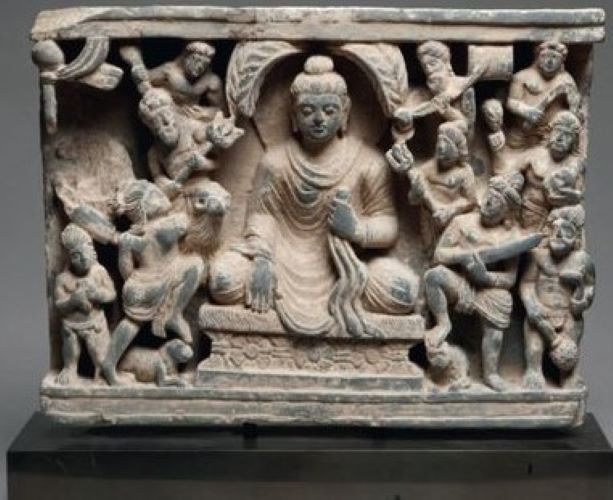
The splendid history of South Asia can be traced and witnessed through above mentioned legendary icons of art from ancient India
Quratulain Kareem
Art is a diverse range of human activity and resulting product that involves creative or imaginative talent expressive of technical proficiency, beauty, emotional power or conceptual ideas. Lot of art had been produced throughout the ages in the land of India. It got influences from other artistic elements like Greeks, Romans and so on.
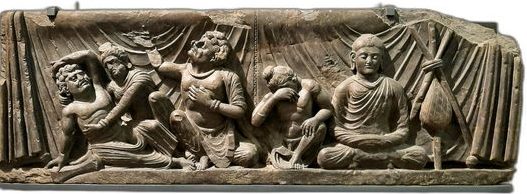
Art produced in ancient India including Mathura art, Amravati art and Gandhara art are famous archaeologically and historically. These three schools of art are mostly surviving in form of sculptures, terracotta figurines, reliefs, coinage, stone palettes and architecture.
When in 2nd century BC Buddhism, Jainism and Hinduism together flourished in India, Mathura was the first artistic center to produce devotional icons for all the three faiths, same as Gandhara produced icons for ancient Greeks and Buddhism. This interface begin with Alexander the great’s brief invasion into the area, followed by the Mauryan Emperor Ashoka converting the region to Buddhism. So this is how Buddhism became the prominent belief in the Indo-Greek Kingdoms. In both Mathura art and Gandhara art, Buddhist iconography is common feature found in.
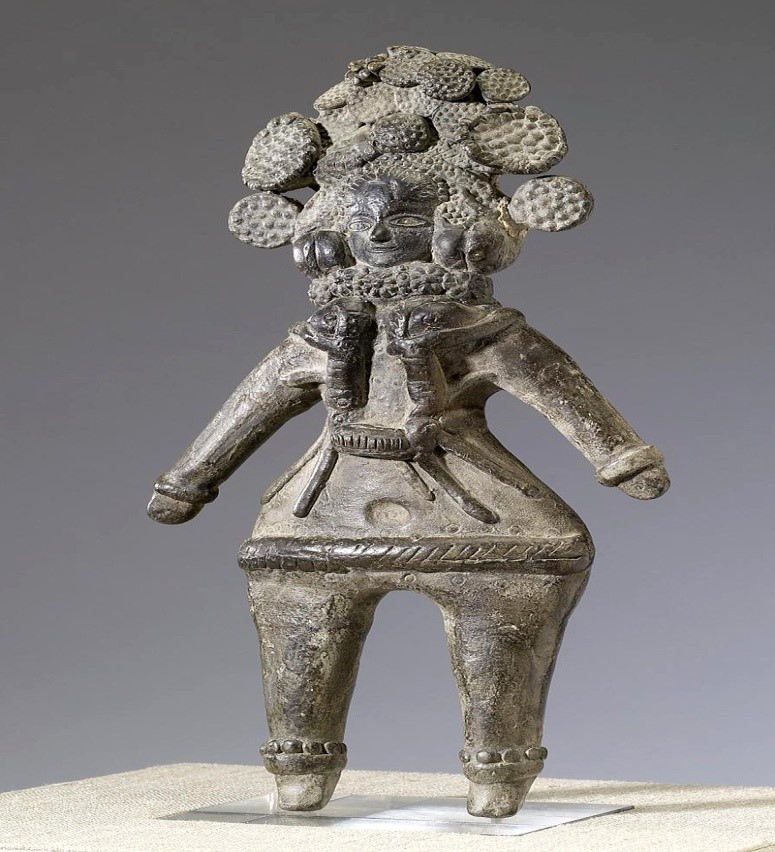
Chronologically, Mathuran sculpture becomes prominent after Mauryan art. It is said to represent a “sharp break” with the previous Mauryan style, either in scale, material or style. Mathura became India’s most important artistic production center from the second century BCE, with its highly recognizable red sandstone statues being admired and exported all over India. In particular, it was in Mathura that the distinctive Indian convention of giving sacred figures multiple body parts, especially heads and arms, first became common in art around the 4th century CE, initially exclusively in Hindu figures, as it derived from Vedic texts.
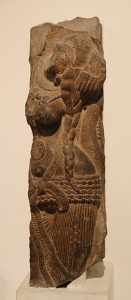
The art of Mathura is often contrasted with the Greco-Buddhist art of Gandhara, which developed from the 1st century CE.
Mathura continued to be an important center for sculpture until Gupta art of the 4th to 6th centuries, if not beyond. After this time much of the sculpture was of Hindu figures.
In every period from early Indus valley till modern period, Mathura produced legendary icons of art which is great example of artistic expressions of ancient Indians. Among the all art icons of Mathura from all the periods few are very worth admiring and pleasing pieces such as Terracotta figurines (4th-2nd century BCE) from Mauryan period , Simple reliefs (circa 150-100 BCE), Complex narrative reliefs , and Jain reliefs.
Terracotta Figurines
A terracotta figurine is a clay sculptures or figurines that aren’t made on a potter’s wheel but are molded by hand and in Mathura Terracotta generally showed what appears to be female deities or mother goddesses, and from the 2nd century women in elaborate headdress. The ancient Vedic text of the Shatapatha Brahmana describes such figurines as “broad-hipped, of smooth breast-region and slender waist” and suggests that they are personifications of the earth, especially the earth goddesses Prithivi and Aditi, as “the container and supporter of the whole world”, and the “repository of all Gods”. Their headdress is often decorated with lotus stalks, complete with conical lotus pistils with their seeds, which symbolize fecundity and beauty. The lotus would remain an attribute of female deities in later periods. Some terracotta statuettes also show a child or children clinging to the goddess, thereby emphasizing her role as a symbol of fecundity. The cult of these female goddesses, characterized by small and easily manufactured figures, appears to have been essentially domestic.
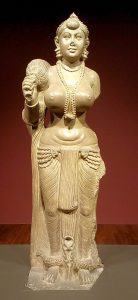
Simple reliefs (circa 150-100 BCE)
A Relief is a sculptural method in which the sculpted pieces remain attached to a solid background of the same material. Reliefs from Mathura are usually rather simple and consist in medallions on railings or balusters, structural elements of stone barriers or “Vedikas” probably established around large stupas which have not remained to this day.
The “Mehrauli Yakshi”, one of the highest quality work among early sculpture, was found in Mehrauli in the cultural area of Mathura.
The high-relief and skillfully carved sculpture shows a female nature divinity, called a Yakshini, holding on the branches of a tree in the Salabhanjika pose, with a long double braid of hair descending down to the girdle.
Complex narrative reliefs (circa 100 BCE)
By 100 BCE, the reliefs represent more complex scenes, defining, according to Sonya Rhie Quintanilla, an age of “iconic diversification and narrative maturation”, as shown by the Kankali Tila architrave representing centaurs worshipping a Jain stupa, the dance of Nilanjana, and the renunciation of Rsabhanata, or the Katra architrave representing Brahmins with pots in a sacred precinct. Kankali Tila architrave with Centaurs worshipping a Jain Stupa, Mathura, circa 100 BCE
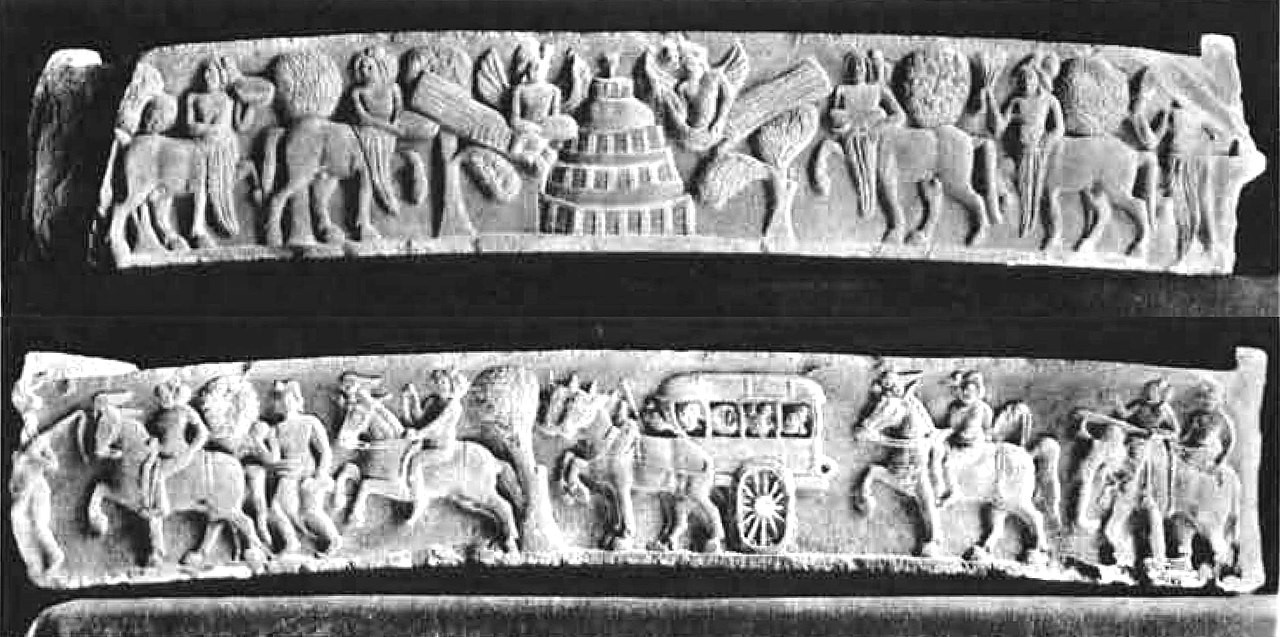
Another relief from the same period shows a Linga inside a railing on platform and under a pipal tree, being worshipped by Gandharvas, an early depiction of the phallic cult in Shivaism.
Jain reliefs
Many of the sculptures from this period are related to the Jain religion, with numerous relief showing devotional scenes, such as the Kankali Tila tablet of Sodasa in the name of Sodasa. Most of these are votive tablets, called Ayagapata.
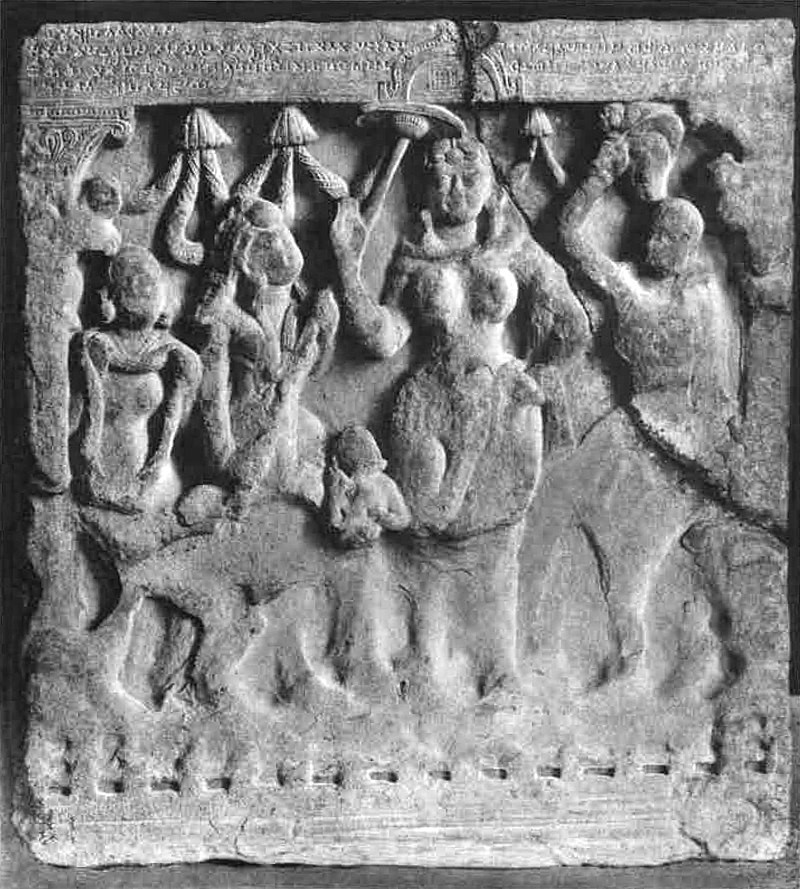
Jain votive plates, called “Ayagapatas”, are numerous, and some of the earliest ones have been dated to circa 50-20 BCE. They were probably prototypes for the first known Mathura images of the Buddha. Many of them were found around the Kankali Tila Jain stupa in Mathura.
Notable among the design motifs in the ayagapatas are the pillar capitals displaying “Persian-Achaemenian” style, with side volutes, flame palmettes, and recumbent lions or winged sphinxes.
Thus the splendid history of South Asia can be traced and witnessed through above mentioned legendary icons of art from ancient India.
_________________
Quratulain Kareem is Teaching Assistant at Department of Anthropology & Archaeology, University of Sindh, Jamshoro Sindh